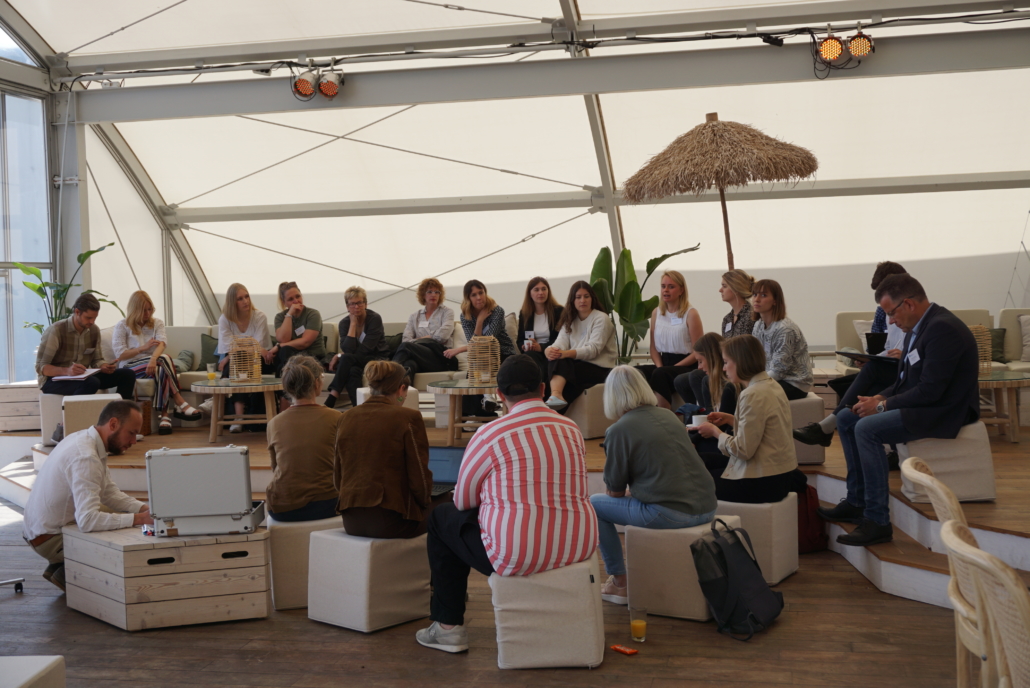Intensive exchange on gender-based violence
Intensive exchange on gender-based violence

Gender-based violence and harassment (GBVH) present companies with major challenges. Reliable data is difficult to collect and suppliers often state that there are no problems or incidents in their company in this regard.
The aim of the workshop "Gender-based violence in the supply chain" was to discuss approaches and strategies on how the grievances can be addressed to business partners and how they can be sensitized to the topic.
Audits are often not gender-sensitive and are usually not suitable for identifying GBVH. The topic is too sensitive and is not addressed by employees in interviews. In addition, there is often a lack of education about what constitutes gender-based violence and what rights and duties employees and management have in this regard.

Without a basis of trust, the topic cannot be raised, identified or effectively addressed. More advanced Partnership companies reported in the workshop that they build this up in a first step or work closely with selected suppliers to tackle the topic.
It is important that (female) employees in production facilities know their rights and are sensitized to the issue of gender-based violence. But that alone is not enough. There is also a need for channels through which those affected can report incidents and complaints anonymously.
Apps can be a solution here: Company representatives reported that worker voice tools offer the promising opportunity to address the topic anonymously and in a protected space via app. In addition, several apps are being developed in which workers are informed about their rights or receive legal advice.
Awareness-raising must also go hand in hand with the strengthening of trade unions, social dialogue or participatory committees, and the role of women in these bodies so that they can effectively stand up for women's rights and put issues such as GBVH on the agenda.
- Es braucht Networked holistic approachesare needed. Few approaches and solutions alone bring improvement, instead they must be thought of together (for example, education and complaint mechanisms, sensitization and empowerment, etc.).
- The discussion shows that despite the challenges, there are already several good solutions, proven approaches and experiences. It is not necessary to rely solely on audits, instead it makes sense to acknowledge and address the risk.
- It is necessary for large and small players to also get involved in joint projects on site at supplier level. Feminist development cooperation is a focus topic at the BMZ, so there is currently a lot of support from the BMZ for projects.
- The Expert Group (EG) on gender-based violence will focus in particular on how better gender-sensitive data can be collected and coordination between suppliers strengthened in the coming months.
The workshop was part of this year's Textiles Partnership Working Meeting on 17 and 18 May in Berlin. The unconference format offered Partnership members the opportunity to propose their own topics and questions that they would like to work on together.
Further information
Sector risk discrimination, sexual harassment and gender-based violence
Guidance for the collection of gender-disaggregated data
Guidance Due Diligence, Social Audits, Gender-Based Violence (2021) including questionnaires for interviews and a dialogue with suppliers
Anual topic 2020: Gender-based violence
Gender Data Guidance developed by ETI, BSR, FWF, AGT, SEDEX and TxB (based on the BSR Guideline Gender Data Impact and Impact Framework and Tool): It is a practice-oriented tool that addresses different levels (beginners and advanced), provides a number of useful indicators, but also shows how the data is to be collected.


